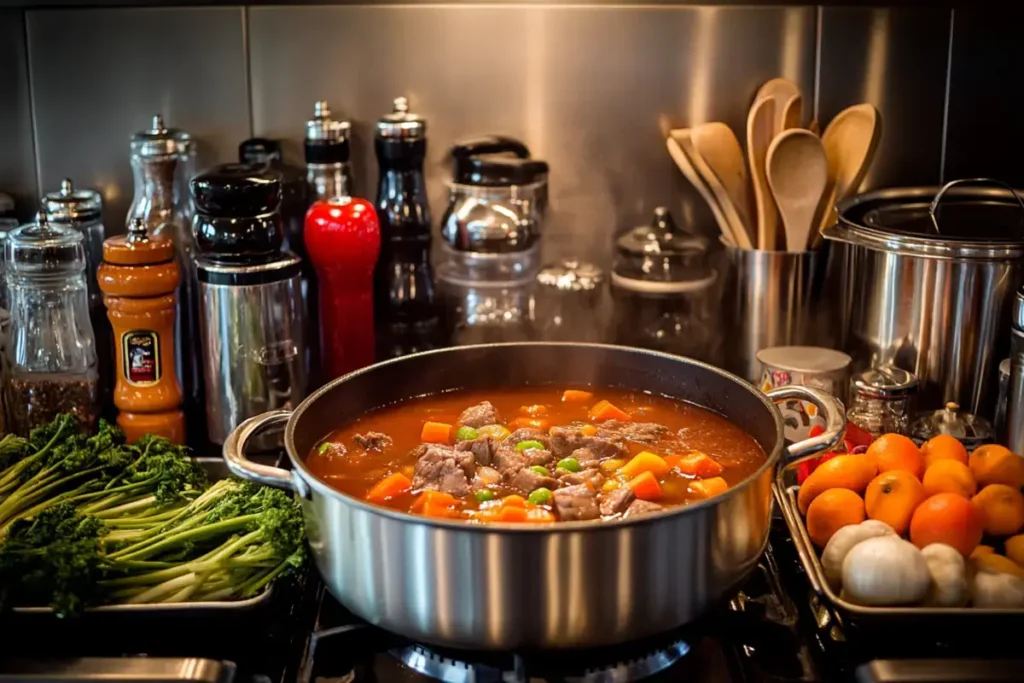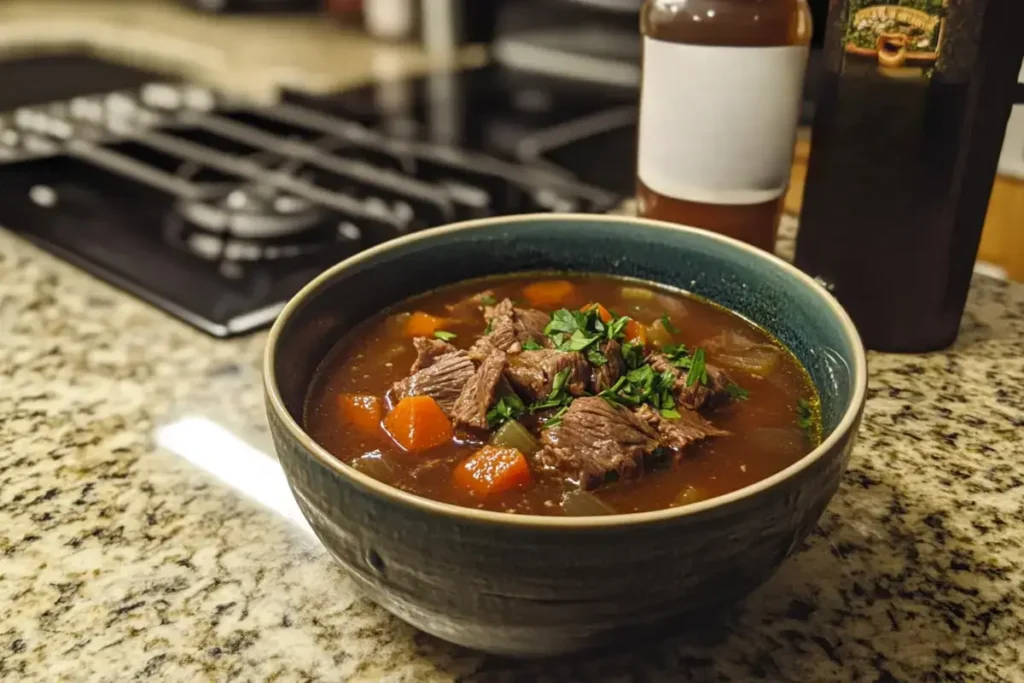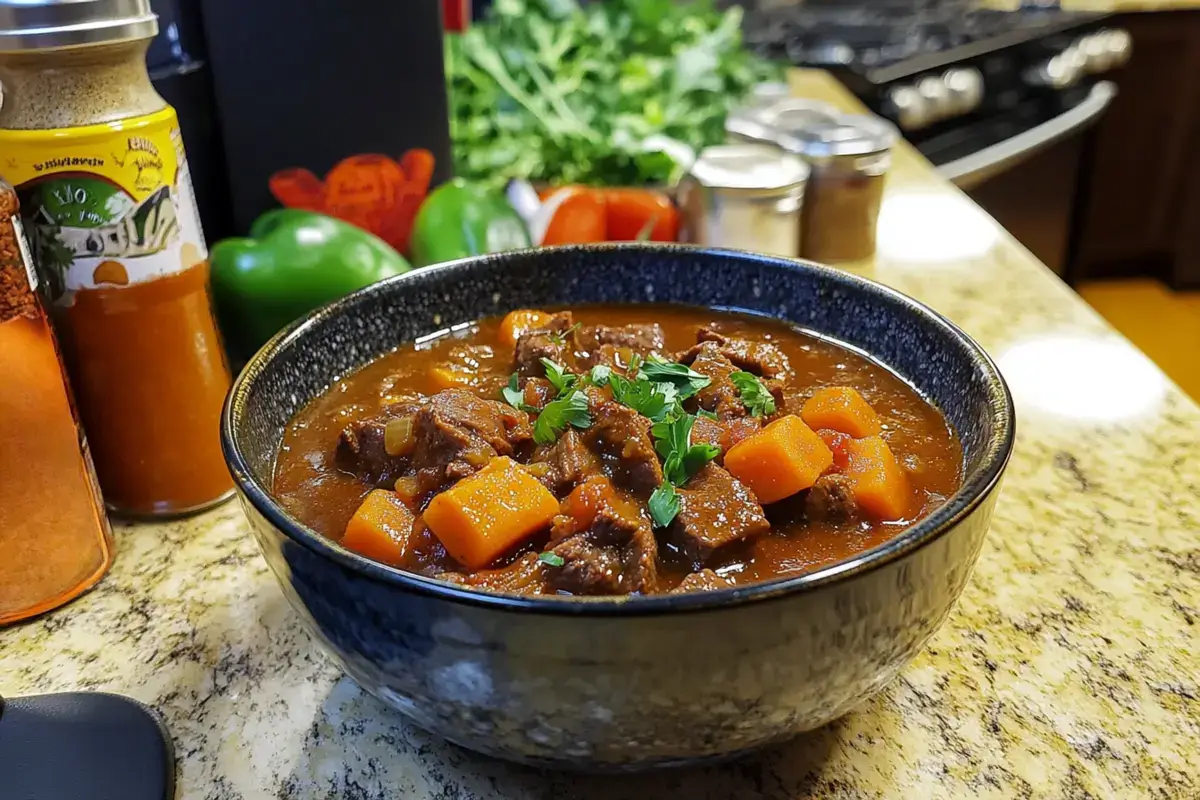Hey everyone, Jessika here from Boldy Recipes! Choosing the right cut of beef can make or break your soup. I’ve experimented with every cut imaginable over the years, and I’ve learned that the most expensive isn’t always the best choice. The most flavorful beef for soup comes from harder-working muscles with plenty of connective tissue and marbling. Let me share exactly which cuts I reach for and why they create the richest, most satisfying beef soup.
Chuck Roast: My Number One Choice
Chuck roast is hands-down the best cut for beef soup in my kitchen. This cut comes from the shoulder area, which means it’s well-marbled with fat and contains plenty of connective tissue. When simmered for hours, that collagen breaks down into gelatin, creating incredibly rich, silky broth and tender, fall-apart beef.
I buy a 2-3 pound chuck roast and cut it into 1-inch cubes myself. This gives me control over the size and ensures uniform cooking. Chuck is also budget-friendly, which matters when you’re making a big pot of soup.

Beef Shank: For Maximum Richness
If I want the absolute richest, most gelatinous soup, I use beef shank. These cross-cut pieces include the bone and surrounding meat, which releases incredible flavor and body into the broth during long simmering.
The bone marrow adds luxurious richness, and the meat becomes incredibly tender. Osso buco (veal shank) works similarly if you can find it. The only downside is that shanks can be harder to find and slightly more expensive, but the depth of flavor is unmatched.
Short Ribs: For Special Occasions
Beef short ribs create incredibly flavorful soup with rich, beefy taste. The meat is well-marbled, and when cooked low and slow, it becomes melt-in-your-mouth tender. I use bone-in short ribs for maximum flavor.
They’re pricier than chuck, so I save them for special occasion soups or when I really want to impress guests. The results are absolutely restaurant-quality.
Oxtail: Old-Fashioned Goodness
My grandmother always used oxtail for her beef soup, and now I understand why. This cut is extremely gelatinous and creates a thick, rich broth with deep flavor. The meat is tender and delicious after hours of simmering.
Oxtail has become trendy and expensive in recent years, but if you can find it at a reasonable price, it makes exceptional soup. I typically combine it with chuck to stretch the budget.

What About Stew Meat?
Pre-cut stew meat is convenient, but I generally avoid it. You never know exactly what cut you’re getting, and it’s often trimmed of the fat that creates flavor. The pieces are also sometimes irregular sizes, leading to uneven cooking.
If you do buy stew meat, look for pieces with visible marbling and avoid anything labeled “lean.” For soup, you want that fat.
Cuts to Avoid
Don’t use expensive lean cuts like sirloin, tenderloin, or top round for soup. They’re meant for quick, high-heat cooking and become dry and tough with long simmering. You’ll waste money and end up with disappointing results.
These cuts lack the connective tissue that breaks down into gelatin, so your broth won’t have that rich, silky body that makes great soup.
My Shopping Strategy
I look for cuts with visible marbling (white fat streaks running through the meat) and connective tissue (the white, silvery membrane). These aren’t flaws they’re exactly what creates flavor in soup.
Ask your butcher for chuck roast, beef shank, or short ribs. Many butchers will cut larger pieces for you at no extra charge. I’ve built relationships with my local butchers, and they often save good soup bones for me.
Bone-In vs. Boneless
Whenever possible, I choose bone-in cuts. Bones add tremendous flavor, body, and nutrients to the broth. The marrow is especially valuable for richness. You can always remove the bones before serving if you prefer.

FAQs
Q: Can I mix different cuts of beef in one soup?
A: Absolutely! I often combine chuck roast with a few short ribs or a piece of shank for layered flavor and richness.
Q: Does grass-fed vs. grain-fed beef matter for soup?
A: Grass-fed has slightly more complex flavor, but both work well. Choose based on your preference and budget the cut matters more than the feeding.
Q: How much beef do I need per person?
A: I plan for ½ pound of bone-in beef or ⅓ pound boneless per person. This accounts for bone weight and shrinkage during cooking.
Q: Can I use ground beef for soup?
A: You can, but you’ll miss out on the texture and richness that come from slow-cooking larger pieces. Ground beef is better for chili than traditional beef soup.

